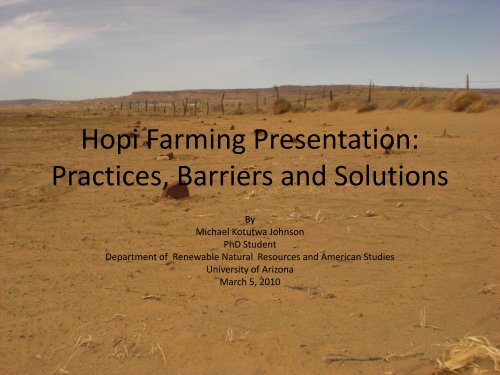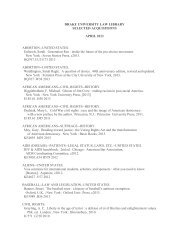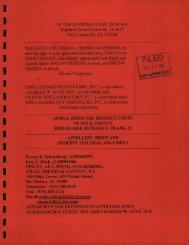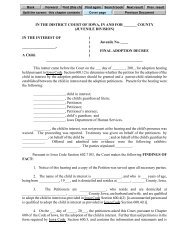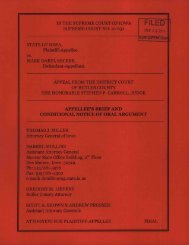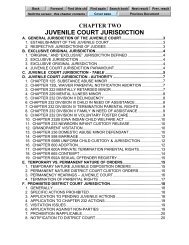Hopi Farming Presentation - Drake University Law School
Hopi Farming Presentation - Drake University Law School
Hopi Farming Presentation - Drake University Law School
- No tags were found...
You also want an ePaper? Increase the reach of your titles
YUMPU automatically turns print PDFs into web optimized ePapers that Google loves.
<strong>Hopi</strong> <strong>Farming</strong> <strong>Presentation</strong>:Practices, Barriers and SolutionsByMichael Kotutwa JohnsonPhD StudentDepartment of Renewable Natural Resources and American Studies<strong>University</strong> of ArizonaMarch 5, 2010
Overview• <strong>Hopi</strong> Dry <strong>Farming</strong> Practices• <strong>Hopi</strong> <strong>Farming</strong> Statistics• Barriers• Solutions• Conclusions
<strong>Hopi</strong> Dry <strong>Farming</strong> and Practices• 4500-5000 Feet• 6-10 Inches of AnnualPrecipitation• 130 Growing DegreeDays• Sandy-Loam Type Soils• Desert Shrubs andGrasses
Why <strong>Hopi</strong>es Farm?• <strong>Farming</strong> to <strong>Hopi</strong> is a way oflife since time immemorial.• Significant part of <strong>Hopi</strong>culture.• <strong>Hopi</strong> Survival throughsubsistence typeagriculture.• Integral to communitydevelopment.• Teaches morals/values.
Most Important Factors for Successful<strong>Hopi</strong> Crop Production• Soil Moisture• Snowfall• Monsoon Rains• Weed Control
Areas Planted• Alluvial Flood Plains• Near Springs or InWashes• Sandy Hills
Storage and Seed Selection• Crops dried then stacked inhome or stored ingalvanized trashcans or jars.Cleaned and restored everyspring.• Seed selection is done bylooking for certain traits(e.g. hard kernels, size ofplant during harvest).
<strong>Hopi</strong> <strong>Farming</strong> Statistics• 287 Farmers (actually more)• 10 Years or More <strong>Farming</strong> Experience.• Majority of Farmers are 35 and over.• Majority of Farms are 1-9 Acres.• Zero percent of Crops go for Animal Feed (e.g.horses and cattle)* 2007 Census of Agriculture
Barriers• No Land Title.• No Business Plan becausecrops are mainly used forsubsistence.• No Capital/Low Income.• No Collateral.• FSA and NRCS Contracts andLoan Applications tocumbersome or hard tounderstand.
Solutions• Tribes Could Issue a Letter Stating Operator had Control ofArea being Farmed as Required by FSA Loans(e.g. GrazingPermits)• FSA Business Plans Must Address Subsistence Issues or FoodSecurity Issues as called for by <strong>Law</strong>.• Federal Government Could Back <strong>Farming</strong> Related Loansbecause of Trust Status. (Ward to Guardian)• Federal Grants instead of Loans to <strong>Hopi</strong> Farmers wouldEliminate Some if Not All of the FSA Loan Requirements.• The Tribe or Indian Non Profit could Apply to the FederalGovernment/NGO then disburse funds to Individual Farmers.
Conclusion• <strong>Farming</strong> is a way of life for <strong>Hopi</strong> people and must bepreserved at all costs first before venturing out intofarm product ventures.• Continued adaptation to the environment andwestern technologies over time is the key and hasbeen one of the keys to the preservation of <strong>Hopi</strong>farming.• Federal governmental agencies must provide bettertechnical assistance and federal legislation must beamended to better meet the needs of Indian farmers
Thank You


